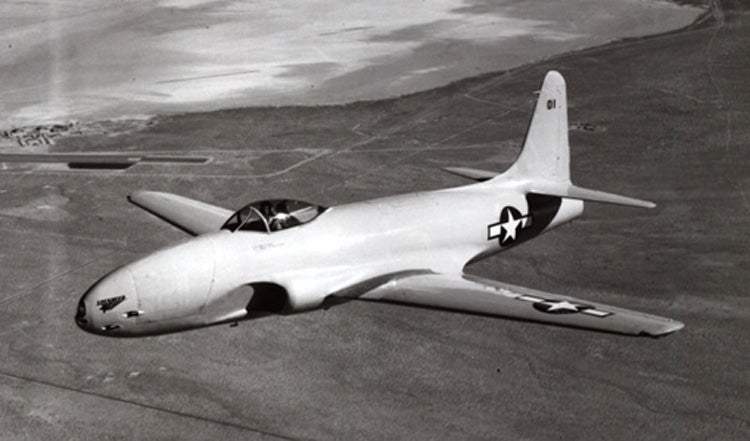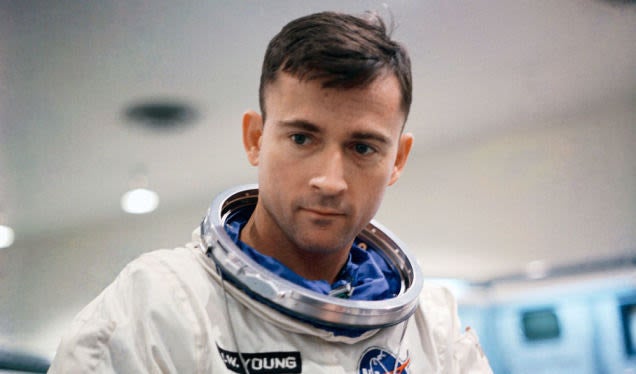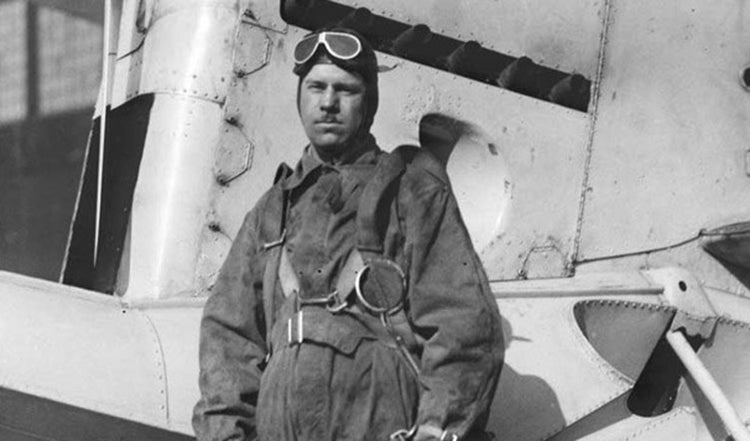 "ttyymmnn" (ttyymmnn)
"ttyymmnn" (ttyymmnn)
01/08/2019 at 12:35 • Filed to: wingspan, planelopnik history, Planelopnik
 7
7
 4
4
 "ttyymmnn" (ttyymmnn)
"ttyymmnn" (ttyymmnn)
01/08/2019 at 12:35 • Filed to: wingspan, planelopnik history, Planelopnik |  7 7
|  4 4 |
!!! UNKNOWN CONTENT TYPE !!!
Welcome to This Date in Aviation History , getting of you caught up on milestones, important historical events and people in aviation from January 5 through January 8.
!!! UNKNOWN CONTENT TYPE !!!
 !!!CAPTION ERROR: MAY BE MULTI-LINE OR CONTAIN LINK!!!
!!!CAPTION ERROR: MAY BE MULTI-LINE OR CONTAIN LINK!!!
January 7, 1942 – The first flight of the Supermarine Seafire. When England entered WWII, the country faced a critical need for a modern, high-performance fighter to operate from their aircraft carriers. As early as 1938, the British government considered adapting the !!!error: Indecipherable SUB-paragraph formatting!!! for carrier operations, but that idea was dropped in favor of production of the !!!error: Indecipherable SUB-paragraph formatting!!! . With the Fulmar, the Royal Navy had a rugged, long-range airframe suitable for carrier use, but the aircraft lacked the agility to dogfight with more modern German aircraft. As a result, the Fleet Air Arm (FAA) ended up starting the war with two woefully unfit fighters, the !!!error: Indecipherable SUB-paragraph formatting!!! biplane and the !!!error: Indecipherable SUB-paragraph formatting!!! which, though it first flew in 1938, was simply no match for the enemy. To bolster their forces, the British purchased the !!!error: Indecipherable SUB-paragraph formatting!!! from the United States, which was known as the Martlet in British service.
 !!!CAPTION ERROR: MAY BE MULTI-LINE OR CONTAIN LINK!!!
!!!CAPTION ERROR: MAY BE MULTI-LINE OR CONTAIN LINK!!!
Following the success of converting the !!!error: Indecipherable SUB-paragraph formatting!!! to naval service, the FAA revisited the idea of converting the Spitfire to carrier service, and existing Spits were modified with an A-frame arrestor hook and a reinforced fuselage. However, its narrow undercarriage proved unsuited to landing on a moving deck, and the intake scoops under the wings made water ditchings particularly hazardous. But even with these modifications, and increases in fuselage strength, the result was still not a purpose-built naval fighter. Further refinements continued, but the Seafire became heavier and its performance suffered. Range, which was already relatively short since the original Spitfire was designed as a land-based plane, also suffered. And it wasn’t until the third variant that the Seafire finally received folding wings. During 1942 and 1943, the Seafire gradually replaced the Hurricane in fleet service, and saw its first action during !!!error: Indecipherable SUB-paragraph formatting!!! , the Allied invasion of North Africa. In the Pacific, the Seafire proved to be a match for the !!!error: Indecipherable SUB-paragraph formatting!!! (Zero), but still not as effective overall as contemporary American fighters that were designed as naval fighters from the beginning.
 !!!CAPTION ERROR: MAY BE MULTI-LINE OR CONTAIN LINK!!!
!!!CAPTION ERROR: MAY BE MULTI-LINE OR CONTAIN LINK!!!
Unlike many aircraft that were designed before WWII, the Seafire remained with the Royal Navy after the end of the war, but was given a more powerful
!!!error: Indecipherable SUB-paragraph formatting!!!
engine in place of the Merlin. This gave the fighter a significant boost in performance, but created a new problem. Unlike the Merlin, which turned to the right, the Griffin engine swing to the left, and even with full rudder correction on takeoff, the Seafire would move towards, rather than away from, the carrier’s island. This problem was eventually rectified in the definitive Mk 47 variant, which was fitted with a contra-rotating propeller. Mk 47 Seafires saw service as late as the Korean War in 1950, but by the following year all Seafires had been removed from front line service. In all its variants, over 2,300 Seafires were produced.
!!! UNKNOWN CONTENT TYPE !!!

An early Lockheed P-80A in flight in 1946 or 1947 (US Air Force)
January 8, 1944 – The first flight of the Lockheed P-80 Shooting Star. Though the jet engine predates WWII, technological advances in engine and aircraft design saw the powerplant mature to the point that it could dependably power an aircraft. The Germans were the first to field a jet-powered fighter with the !!!error: Indecipherable SUB-paragraph formatting!!! , and the British were close on their heels with the !!!error: Indecipherable SUB-paragraph formatting!!! . The Americans, however, were much farther behind on jet engine development, so their first efforts in the jet fighter age would be powered by British engines. Nevertheless, the P-80 Shooting Star would emerge as perhaps the best jet fighter of the war period, though it came too late to see combat in that conflict.
 !!!CAPTION ERROR: MAY BE MULTI-LINE OR CONTAIN LINK!!!
!!!CAPTION ERROR: MAY BE MULTI-LINE OR CONTAIN LINK!!!
The Shooting Star began as a development of the !!!error: Indecipherable SUB-paragraph formatting!!! , America’s first jet-powered fighter, when Bell was unable to continue its development and the design passed to Lockheed. In just 143 days, Lockheed had redesigned the Airacomet around a !!!error: Indecipherable SUB-paragraph formatting!!! turbojet engine, and America’s first operational jet fighter was born. While that engine only provided 2,460 pounds of thrust, the Shooting Star still reached a top speed of 502 mph, the first American aircraft to exceed 500 mph in level flight. Later variants were powered by a General Electric I-40 engine, itself an improvement of another British design, and ultimately produced by Allison as the !!!error: Indecipherable SUB-paragraph formatting!!! . The Air Force was so impressed with the performance of the sleek new fighter that they immediately ordered 5,000 copies, but that number was reduced to 917 with the end of WWII.

Shooting Stars of the 36th Fighter-Bomber Squadron in Korea (US Air Force)
The early Shooting Stars were not without teething troubles, and difficulties with fuel pumps led to a spate of crashes, one of which killed America’s top scoring WWII fighter ace !!!error: Indecipherable SUB-paragraph formatting!!! . But once the fuel delivery issues were solved, the P-80, now called the F-80 in the revised Air Force designation system, went on to become an excellent fighter, and the Shooting Star laid claim to the world’s first jet-to-jet aerial victory when it downed a Russian-built !!!error: Indecipherable SUB-paragraph formatting!!! in the skies over Korea. Despite that victory, the Shooting Star was no match for the swept-wig MiG, so air superiority duties were turned over to the !!!error: Indecipherable SUB-paragraph formatting!!! , while the F-80 took on ground attack and reconnaissance missions. Though the F-80's days as a jet fighter ended with the Korean War, the two-seat trainer variant, known as the !!!error: Indecipherable SUB-paragraph formatting!!! , became America’s first jet-powered trainer and served into the 1980s. A total of 1,715 P/F-80 fighters were produced, but over 6,550 T-33s were built before production ended in 1959.

A two-seat T-33. More than 6,500 T-33 trainers were built, compared to 1,715 single-seat fighters. (US Air Force)
!!! UNKNOWN CONTENT TYPE !!!
Short Takeoff
!!! UNKNOWN CONTENT TYPE !!!

(NASA)
January 5, 2018 – The death of John Young, an American aeronautical engineer, US Naval Aviator, test pilot, and astronaut. Young was born in San Francisco, California, on September 24, 1930 and began flying with the US Navy as a helicopter pilot in 1954 before transferring to jets, flying !!!error: Indecipherable SUB-paragraph formatting!!! from USS Coral Sea CV 43) and !!!error: Indecipherable SUB-paragraph formatting!!! from USS Forrestal (CV 59). Young joined NASA in 1962 as part of Astronaut Group 2 and was the first member of his group to fly in space when he joined !!!error: Indecipherable SUB-paragraph formatting!!! in the first manned flight of the !!!error: Indecipherable SUB-paragraph formatting!!! program in 1965. During his time with the space agency, Young made six space flights including !!!error: Indecipherable SUB-paragraph formatting!!! and !!!error: Indecipherable SUB-paragraph formatting!!! , !!!error: Indecipherable SUB-paragraph formatting!!! , where he became the first man to orbit the Moon alone, and !!!error: Indecipherable SUB-paragraph formatting!!! , where he drove the !!!error: Indecipherable SUB-paragraph formatting!!! on the Moon. His flights aboard two Apollo missions made Young one of only three astronauts who have flown to the Moon twice. He made the first of two flights aboard the !!!error: Indecipherable SUB-paragraph formatting!!! as commander of the maiden flight in 1981, making him the only astronaut to fly in four different classes of spacecraft: !!!error: Indecipherable SUB-paragraph formatting!!! , the !!!error: Indecipherable SUB-paragraph formatting!!! , the !!!error: Indecipherable SUB-paragraph formatting!!! , and the Space Shuttle. Young’s retirement from NASA in 2004 after 42 years of service marked the end of the longest career of any NASA astronaut. His logbook contains more than 15,275 hours of flying time in all manner of powered aircraft (more than 9,200 hours in !!!error: Indecipherable SUB-paragraph formatting!!! alone), and 835 hours in spacecraft logged over the course of six space flights.
!!! UNKNOWN CONTENT TYPE !!!
 !!!CAPTION ERROR: MAY BE MULTI-LINE OR CONTAIN LINK!!!
!!!CAPTION ERROR: MAY BE MULTI-LINE OR CONTAIN LINK!!!
January 5, 1995 – The death of Benjamin Robert Rich
. Born on June 18, 1925 in Manila, Philippines, Rich began working with Lockheed as a thermodynamicist before succeeding the legendary
!!!error: Indecipherable SUB-paragraph formatting!!!
as head of Lockheed’s
!!!error: Indecipherable SUB-paragraph formatting!!!
, better known as the Skunk Works. Early in his career with Lockheed, Rich worked on the
!!!error: Indecipherable SUB-paragraph formatting!!!
and
!!!error: Indecipherable SUB-paragraph formatting!!!
programs, but he is best known as the “Father of Stealth.” Rich championed the development of stealth technology at a time when many inside Lockheed, including the retired Johnson, believed that it was a waste of time and money. Rich’s team first developed the
!!!error: Indecipherable SUB-paragraph formatting!!!
stealth demonstrator, and followed it with the
!!!error: Indecipherable SUB-paragraph formatting!!!
, the world’s first operational stealth aircraft. Rich retired from Lockheed in 1990, and died of cancer in Ventura, California.
!!! UNKNOWN CONTENT TYPE !!!
 !!!CAPTION ERROR: MAY BE MULTI-LINE OR CONTAIN LINK!!!
!!!CAPTION ERROR: MAY BE MULTI-LINE OR CONTAIN LINK!!!
July 5, 1941 – The death of Amy Johnson (CBE).
Born on July 1, 1903 in Yorkshire, England, Johnson was a pioneering British aviatrix and the first female pilot to fly alone from England to Australia, making the 11,000-mile flight in a
!!!error: Indecipherable SUB-paragraph formatting!!!
named
Jason
. In 1931, she made another historic flight from London to Moscow with copilot Jack Humphreys in a record time of 21 hours, and made other record-setting flights from England to India and from England to South Africa. During WWII, Johnson served as a pilot for the
!!!error: Indecipherable SUB-paragraph formatting!!!
, and died on January 5, 1941 after bailing out of her
!!!error: Indecipherable SUB-paragraph formatting!!!
over the Thames Estuary when the aircraft ran out of fuel. The crew of HMS
Haslemere
witnessed the bailout, but she was killed by the ship’s propellers during the rescue attempt.
!!! UNKNOWN CONTENT TYPE !!!

(US Marine Corps)
January 6, 1928 – USMC aviator 1st Lt. Charles F. Schilt rescues Marines from a besieged town in Nicaragua and is awarded the Congressional Medal of Honor for his actions. During the so-called !!!error: Indecipherable SUB-paragraph formatting!!! of 1912-1933, when the United States intervened in the affairs of Caribbean and Central American countries, the US twice !!!error: Indecipherable SUB-paragraph formatting!!! Managua, the capital of Nicaragua. Lt. Schilt, one of the first Marine Corps aviators, was assigned to Marine Observation Squadron 7 (VMO-7) as a reconnaissance pilot flying a !!!error: Indecipherable SUB-paragraph formatting!!! . When a unit of Marines was ambushed and became trapped in the city, Lt. Schilt volunteered to land on a crude runway and, over the course of ten flights under enemy fire, he evacuated 18 wounded Marines, brought in a replacement commander, and delivered critical medical supplies. Schilt went on to become the Assistant Commandant of the Marine Corps for Aviation retired from the Marine Corps in 1957 at the rank of General before his death in 1987 at age 91.
!!! UNKNOWN CONTENT TYPE !!!
!!! UNKNOWN CONTENT TYPE !!!

(US Navy)
January 7, 1960 – The first launch of the Polaris missile.
The United States, along with Russia, utilize what is known as the
!!!error: Indecipherable SUB-paragraph formatting!!!
, which is the ability to attack their enemies with nuclear weapons from three sources: aircraft, land-based intercontinental ballistic missiles (ICBMs), and submarines. The US was the first to drop an atomic bomb from an airplane during WWII, and they followed that with the
!!!error: Indecipherable SUB-paragraph formatting!!!
land-based ICBM in October of 1959. To complete the triad, the Polaris, a two-stage, solid fuel rocket that could be launched from a submerged submarine, entered service in 1961. USS
George Washington
(SSBN-598) was the first ballistic missile submarine and carried sixteen Polaris A-1 missiles. Forty more SSBNs were launched from 1960-1966, and the Polaris was finally removed from service in 1996.
!!! UNKNOWN CONTENT TYPE !!!
 !!!CAPTION ERROR: MAY BE MULTI-LINE OR CONTAIN LINK!!!
!!!CAPTION ERROR: MAY BE MULTI-LINE OR CONTAIN LINK!!!
January 7, 1947 – The death of Helen Richey.
Born in 1909, Richey was a pioneering aviatrix and the first woman in the United States to be hired as a commercial airline pilot. Richey obtained her pilot license at age 20 and, with the help of pilot Frances Marsalis, she set an endurance record by staying aloft for 10 days with midair refueling in 1933. She also competed in air races, toured with
!!!error: Indecipherable SUB-paragraph formatting!!!
, and set an altitude record of over 18,000 feet. In 1934, Richey was hired by Central Airlines of Pennsylvania, where she piloted a
!!!error: Indecipherable SUB-paragraph formatting!!!
, though she was eventually forced to quit her job by the all-male pilot’s union. Richey was also the first woman to be certified as an airmail pilot, and one of the first women to serve as a flight instructor. She died in 1947 of an apparent overdose, and her death was ruled a suicide.
!!! UNKNOWN CONTENT TYPE !!!
 !!!CAPTION ERROR: MAY BE MULTI-LINE OR CONTAIN LINK!!!
!!!CAPTION ERROR: MAY BE MULTI-LINE OR CONTAIN LINK!!!
January 8, 1959 – The first flight of the Armstrong Whitworth AW.650/660 Argosy, a post-war, medium transport developed for the RAF and the final aircraft produced by !!!error: Indecipherable SUB-paragraph formatting!!! . Armstrong Whitworth was perhaps best known for the !!!error: Indecipherable SUB-paragraph formatting!!! bomber, which served as a large frontline bomber with the RAF throughout WWII. The Argosy arose from an RAF request for a freighter capable of carrying 25,000 pounds of cargo at a range of up to 2,000 miles. However, the RAF was initially uninterested in Armstrong Whitworth’s design, so the company forged ahead on their own with a civilian version, the AW.650, eventually developing the AW.660 militarized version when the RAF needed to replace their obsolete WWII-era freighters. A total of 74 Argosys were produced.
!!! UNKNOWN CONTENT TYPE !!!
Connecting Flights
!!! UNKNOWN CONTENT TYPE !!!
!!! UNKNOWN CONTENT TYPE !!!
!!! UNKNOWN CONTENT TYPE !!!
!!! UNKNOWN CONTENT TYPE !!!
!!! UNKNOWN CONTENT TYPE !!!
If you enjoy these Aviation History posts, please let me know in the comments. And if you missed any of the past articles, you can find them all at
!!!error: Indecipherable SUB-paragraph formatting!!!
. You can also find more stories about aviation, aviators and airplane oddities at
!!!error: Indecipherable SUB-paragraph formatting!!!
.
!!! UNKNOWN CONTENT TYPE !!!
 Distraxi's idea of perfection is a Jagroen
> ttyymmnn
Distraxi's idea of perfection is a Jagroen
> ttyymmnn
01/08/2019 at 15:07 |
|
“Mk 47 Seafires”
When you get to the 47th revision of
anything
,it’s time to rea
l
ise you’re flogging a dead horse.
Also: Safe Air, a NZ c argo airline , ran a couple of Argosies as late as 1990 or so, hopping th e Cook Strait and serving the outlying islands. I remember seeing them operating at Wellington Airport, and I have a vague memory of flying in one as a a kid when they were operating as car transports across the Str a it during a ferry strike (a regular holiday-season event during the 70s). There’s still a non-airworthy one used as a tourist attraction at Blenheim airport. http://www.argosy.org.nz/
The Safe Air Argosy’s other claim to fame is the ( locally) famous “Kaikoura Lights” UFO sighting. https://www.newshub.co.nz/home/new-zealand/2017/12/will-the-ufos-return-to-kaikoura.html
 ttyymmnn
> Distraxi's idea of perfection is a Jagroen
ttyymmnn
> Distraxi's idea of perfection is a Jagroen
01/08/2019 at 15:11 |
|
When you get to the 47th revision of anything ,it’s time to realise you’re flogging a dead horse.
LOL
Or at least hope that you’ve finally figured it out, or that it’s time to stop trying.
 You can tell a Finn but you can't tell him much
> ttyymmnn
You can tell a Finn but you can't tell him much
> ttyymmnn
01/08/2019 at 17:05 |
|
“... but over 6,550 T-33s were built before production needed in 1959.”
I suspect production ended in 1959, though they must have needed some more since they were still building them. Good write up as always.
 ttyymmnn
> You can tell a Finn but you can't tell him much
ttyymmnn
> You can tell a Finn but you can't tell him much
01/08/2019 at 17:07 |
|
Thanks!
Typos suck.